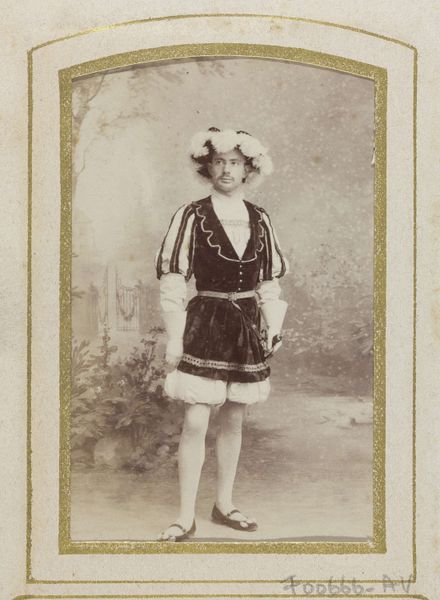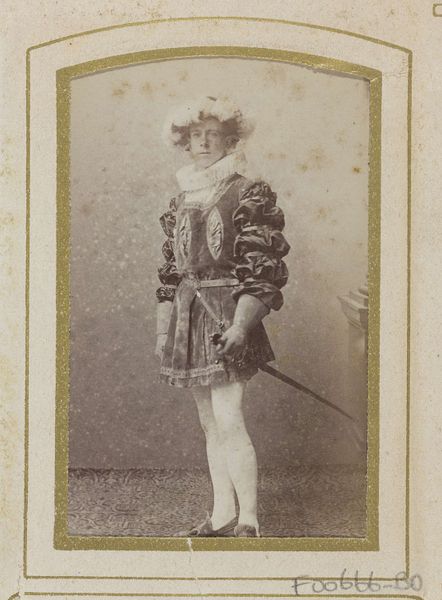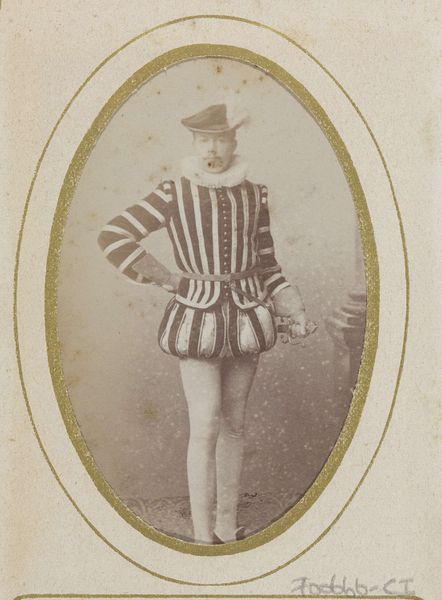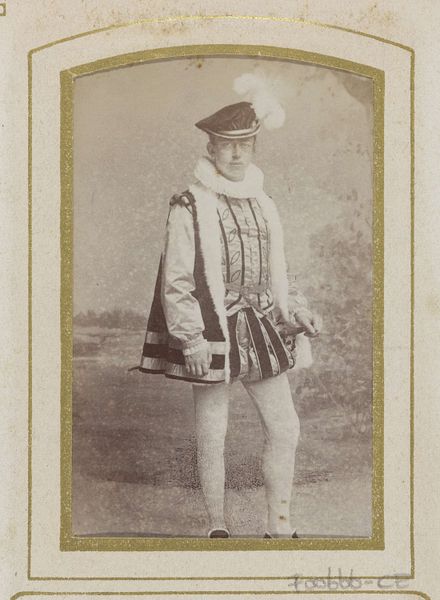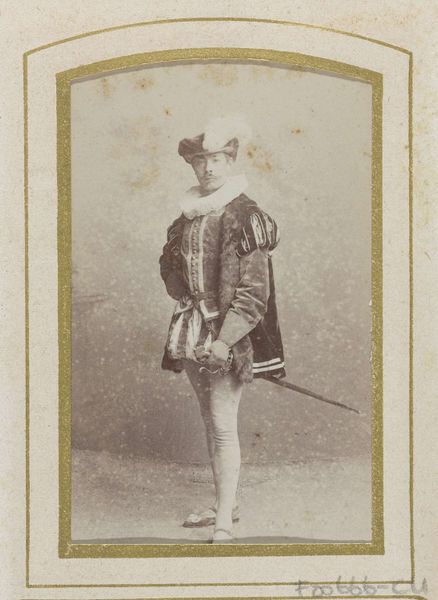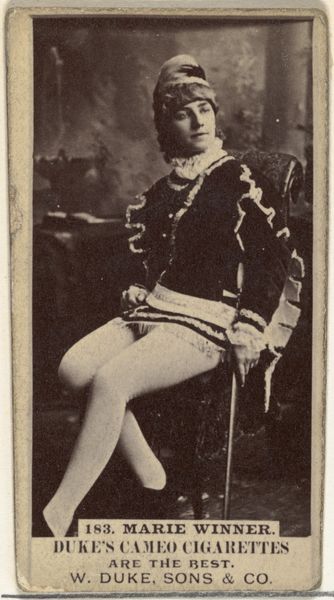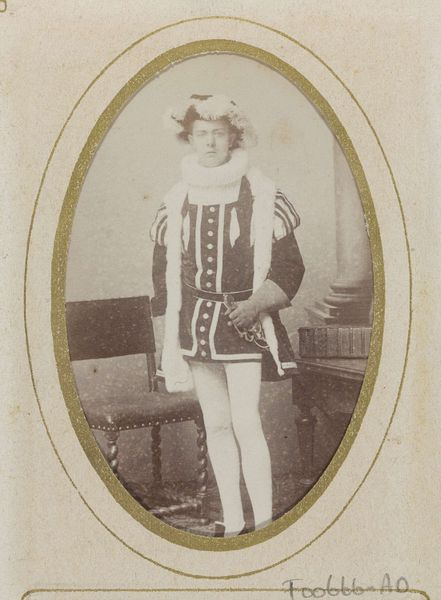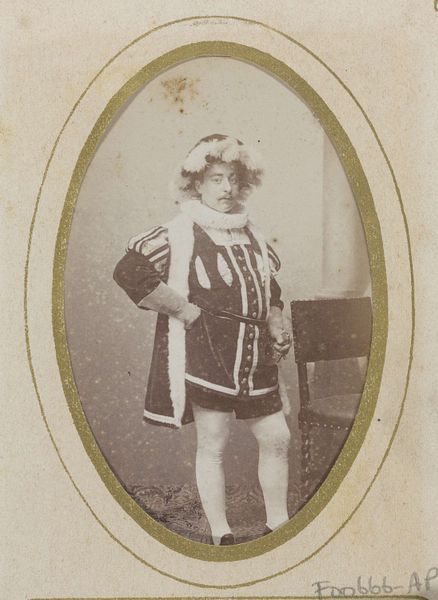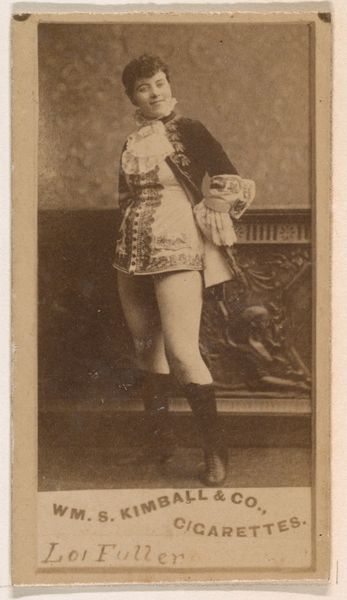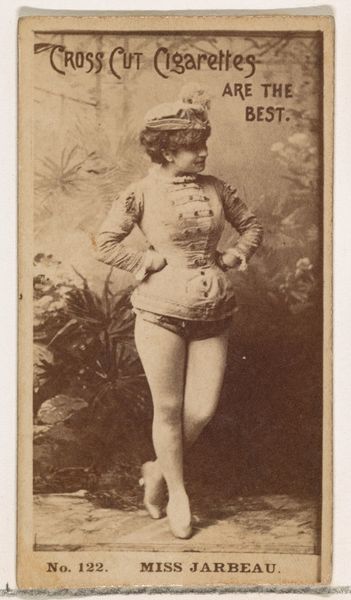
daguerreotype, photography
#
portrait
#
daguerreotype
#
archive photography
#
photography
#
historical photography
#
19th century
#
genre-painting
Dimensions: height 83 mm, width 52 mm
Copyright: Rijks Museum: Open Domain
Editor: This daguerreotype, "Portret van Arnold Cornelis Maas Geesteranus in kostuum," created around 1887 by Adolphe Zimmermans, strikes me as incredibly theatrical. What layers do you see within this image? Curator: I see a fascinating tableau of identity, class, and performance. Consider the date: photography was becoming more accessible, yet staging a portrait like this still spoke to a certain social positioning. What does it mean for Maas Geesteranus to choose to be depicted in costume? Is this a celebration of genre-painting and theater, or is it about something more? Editor: It's interesting to think about "choosing" an identity to present. Maybe he's making a statement about artifice? Curator: Exactly. Think about the construction of masculinity in the 19th century. The elaborate costume could be read as challenging the norms of bourgeois masculinity. How does this theatricality connect with power, with resistance? What societal norms is Maas Geesteranus performing, and which ones might he be subverting? This relates to similar images of affluent Europeans and Americans role-playing otherness. Editor: That's a complex relationship to the societal standards of the time. Curator: Absolutely. And beyond this individual portrait, consider the power dynamics inherent in portraiture itself. Who gets to be remembered? Who controls the narrative? Examining the power relations, social constructs and cultural values, like what is seen here, through a modern critical lens is important. Editor: I see so many avenues for future research on societal constructions. Thank you for clarifying the social and historical context around this image. Curator: My pleasure! There is much to discuss!
Comments
No comments
Be the first to comment and join the conversation on the ultimate creative platform.
